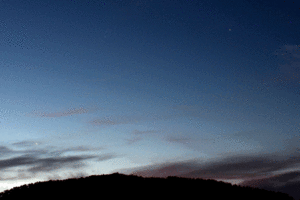A2.GU2.ZI.GA: Difference between revisions
From All Skies Encyclopaedia
A2.GU2.ZI.GA
DavidHilder (talk | contribs) No edit summary |
DavidHilder (talk | contribs) No edit summary |
||
| (7 intermediate revisions by 3 users not shown) | |||
| Line 1: | Line 1: | ||
{{DISPLAYTITLE:A<sub>2</sub>.GU<sub>2</sub>.ZI.GA 𒀉𒄘𒍣𒂵}} |
{{DISPLAYTITLE:A<sub>2</sub>.GU<sub>2</sub>.ZI.GA 𒀉𒄘𒍣𒂵}} |
||
[[File:Pleiades and Venus in blue dawn 2020.jpg|alt=photograph of Venus in dawn|thumb|Venus just above the mountain in dawn. ]] |
[[File:Pleiades and Venus in blue dawn 2020.jpg|alt=photograph of Venus in dawn|thumb|Venus just above the mountain in dawn. ]] |
||
A<sub>2</sub>.GU<sub>2</sub>.ZI.GA (𒀉𒄘𒍣𒂵) |
MUL A<sub>2</sub>.GU<sub>2</sub>.ZI.GA (𒀉𒄘𒍣𒂵) = ''kakkab še-re-e-tu'', 'star of the morning,' is a Mesopotamian term for an asterism rising at dawn, but not necessarily Venus. |
||
__FORCETOC__ |
__FORCETOC__ |
||
==Concordance, Etymology, History<ref>[[Mesopotamian (All Terms)|Planetarium Babylonicum 2.0]], All Skies Encyclopaedia.</ref>== |
|||
==Dictionary== |
|||
[[File:Jupiter-mars-plejaden 2024-07-08 IMG 2438 engl.gif|alt=photograph with labels|thumb|Jupiter, Mars, and Pleiades in dawn. Photograph on July 8 2024 03:57 by Susanne M Hoffmann, animated GIF displays labels (English)]] |
[[File:Jupiter-mars-plejaden 2024-07-08 IMG 2438 engl.gif|alt=photograph with labels|thumb|Jupiter, Mars, and Pleiades in dawn. Photograph on July 8 2024 03:57 by Susanne M Hoffmann, animated GIF displays labels (English)]]'''Var. readings:''' |
||
===Kurtik with Hilder, Hoffmann, Horowitz, Kim=== |
|||
Var. readings: |
|||
* A<sub>2</sub>.GU<sub>2</sub>.ZIG<sub>3</sub>.GA |
* A<sub>2</sub>.GU<sub>2</sub>.ZIG<sub>3</sub>.GA |
||
| Line 17: | Line 14: | ||
* "(star) of the morning" |
* "(star) of the morning" |
||
*Most often Venus (AHw 1219a; CAD |
*Most often Venus (AHw<ref>''Soden von W''. Akkadisches Handwörterbuch. Wiesbaden, 1985.</ref> 1219a; CAD<ref>''The Assyrian Dictionary of the Oriental Institute of the University of Chicago.'' Chicago - Glückstadt, 1956</ref> Š/2 312f., 331f.), in this case epithet of the goddess Inanna/Ishtar as the morning star |
||
*But also possible for other celestial objects, e.g. Mercury and Jupiter |
*But also possible for other celestial objects, e.g. Mercury and Jupiter |
||
| Line 28: | Line 25: | ||
'''Lexical texts.''' |
'''Lexical texts.''' |
||
*Urra 22: 327’: <sup>mul</sup>''a-gu-zi-ga'' = MIN '' |
*Urra 22: 327’: <sup>mul</sup>''a-gu-zi-ga'' = MIN (''kakkab'') ''še-re-e-tu'' ('''''Bloch-Horowitz ???) But check the CAD AHw entries for other attestations to put in below??''''' |
||
*Series DC XXII: <sup>mul</sup>a<sub>2</sub>.gu<sub>2</sub>.zi.ga = min(''kab-kab'') ''še-re-ti'' [MSL XI 31, Section 11, A col. v 9]; <sup>mul</sup>a<sub>2</sub><sup>!</sup>.g[u<sub>2</sub>].zi.g[a] = min(''kak-ka-bi'') ''še-re-e-ti'' [SpTU III, 114 A col. v 67]. |
*<s>Series DC XXII: <sup>mul</sup>a<sub>2</sub>.gu<sub>2</sub>.zi.ga = min(''kab-kab'') ''še-re-ti'' [MSL XI<ref>''Materials for the Sumerian Lexicon''. Vol. XI. The Series HAR-ra = ''hubullu.'' Tablets XX-XXIV. Ed. by E.Reiner with the coll. of M.Civil. Roma, 1974.</ref> 31, Section 11, A col. v 9]; <sup>mul</sup>a<sub>2</sub><sup>!</sup>.g[u<sub>2</sub>].zi.g[a] = min(''kak-ka-bi'') ''še-re-e-ti'' [SpTU<ref>''Špätbabylonische Texte aus Uruk.'' Teil III / Bearb. von Weiher E. von. Berlin, 1988.</ref> III, 114 A col. v 67].</s> |
||
| |
| |
||
|} |
|} |
||
See also: <sup>mul</sup>''a''<sub>2</sub>-''gu''<sub>2</sub>-''zi-ga u''<sub>4</sub>-''sa''<sub>9</sub>-''dagal-la-ke''<sub>4</sub> "The morning star, (shining even) at noon" ("Ludingirra's epistle to his mother") [Civil 1964 2:23; ETCSL, 5.5.1:23]. |
See also: <sup>mul</sup>''a''<sub>2</sub>-''gu''<sub>2</sub>-''zi-ga u''<sub>4</sub>-''sa''<sub>9</sub>-''dagal-la-ke''<sub>4</sub> "The morning star, (shining even) at noon" ("Ludingirra's epistle to his mother") [Civil 1964<ref>Civil M. The “Message of Lú-dingir-ra to His Mother” and a Group of Akkado-Hittite “Proverbs” // JNES. 1964. V. 23. P. 1-11.</ref> 2:23; ETCSL<ref>''Black J.A., Cunningham G., Fluckiger-Hawker E., Robson'' ''E., and Zólyomi G. The Electronic Text Corpus of Sumerian Literature'' (<nowiki>http://www-etcsl.orient.ox.ac.uk/</nowiki>), Oxford 1998-.</ref>, 5.5.1:23]. |
||
==Historical Dictionaries== |
==Historical Dictionaries== |
||
| Line 46: | Line 43: | ||
| |
| |
||
|} |
|} |
||
[[Category:4workWayne]] |
|||
[[Category:Mesopotamian]] |
[[Category:Mesopotamian]] |
||
| Line 54: | Line 53: | ||
[[Category:Solar System]] |
[[Category:Solar System]] |
||
[[Category:Planet]] |
[[Category:Planet]] |
||
[[Category:Venus]] |
|||
[[Category:Mercury]] |
|||
[[Category:Jupiter]] |
|||
Latest revision as of 09:30, 16 December 2025
MUL A2.GU2.ZI.GA (𒀉𒄘𒍣𒂵) = kakkab še-re-e-tu, 'star of the morning,' is a Mesopotamian term for an asterism rising at dawn, but not necessarily Venus.
Concordance, Etymology, History[1]
Var. readings:
- A2.GU2.ZIG3.GA
- = šēru (Akkadian)
- "(star) of the morning"
- Most often Venus (AHw[2] 1219a; CAD[3] Š/2 312f., 331f.), in this case epithet of the goddess Inanna/Ishtar as the morning star
- But also possible for other celestial objects, e.g. Mercury and Jupiter
| Sources | Identifications |
|---|---|
|
Lexical texts.
|
See also: mula2-gu2-zi-ga u4-sa9-dagal-la-ke4 "The morning star, (shining even) at noon" ("Ludingirra's epistle to his mother") [Civil 1964[6] 2:23; ETCSL[7], 5.5.1:23].
Historical Dictionaries
| Kurtik (2022, a05) | Gössmann (1950) |
|---|---|
| вар. чтения: A2.GU2.ZIG3.GA; = šēru "(звезда) утра"; эпитет богини Инанны/Иштар как утренней звезды [AHw 1219a; CAD Š/2 312f., 331f.].
I. Источники. Лексич. тексты. Серия DC XXII: mula2.gu2.zi.ga = min(kab-kab) še-re-ti [MSL XI 31, Section 11, A col. v 9]; mula2!.g[u2].zi.g[a] = min(kak-ka-bi) še-re-e-ti [SpTU III, 114 А col. v 67]. См также: mula2-gu2-zi-ga u4-sa9-dagal-la-ke4 "Утренняя звезда, (сияющая даже) в полдень" ("Послание Лудингирры к своей матери") [Civil 1964 2:23; ETCSL, 5.5.1:23]. |
- ↑ Planetarium Babylonicum 2.0, All Skies Encyclopaedia.
- ↑ Soden von W. Akkadisches Handwörterbuch. Wiesbaden, 1985.
- ↑ The Assyrian Dictionary of the Oriental Institute of the University of Chicago. Chicago - Glückstadt, 1956
- ↑ Materials for the Sumerian Lexicon. Vol. XI. The Series HAR-ra = hubullu. Tablets XX-XXIV. Ed. by E.Reiner with the coll. of M.Civil. Roma, 1974.
- ↑ Špätbabylonische Texte aus Uruk. Teil III / Bearb. von Weiher E. von. Berlin, 1988.
- ↑ Civil M. The “Message of Lú-dingir-ra to His Mother” and a Group of Akkado-Hittite “Proverbs” // JNES. 1964. V. 23. P. 1-11.
- ↑ Black J.A., Cunningham G., Fluckiger-Hawker E., Robson E., and Zólyomi G. The Electronic Text Corpus of Sumerian Literature (http://www-etcsl.orient.ox.ac.uk/), Oxford 1998-.






